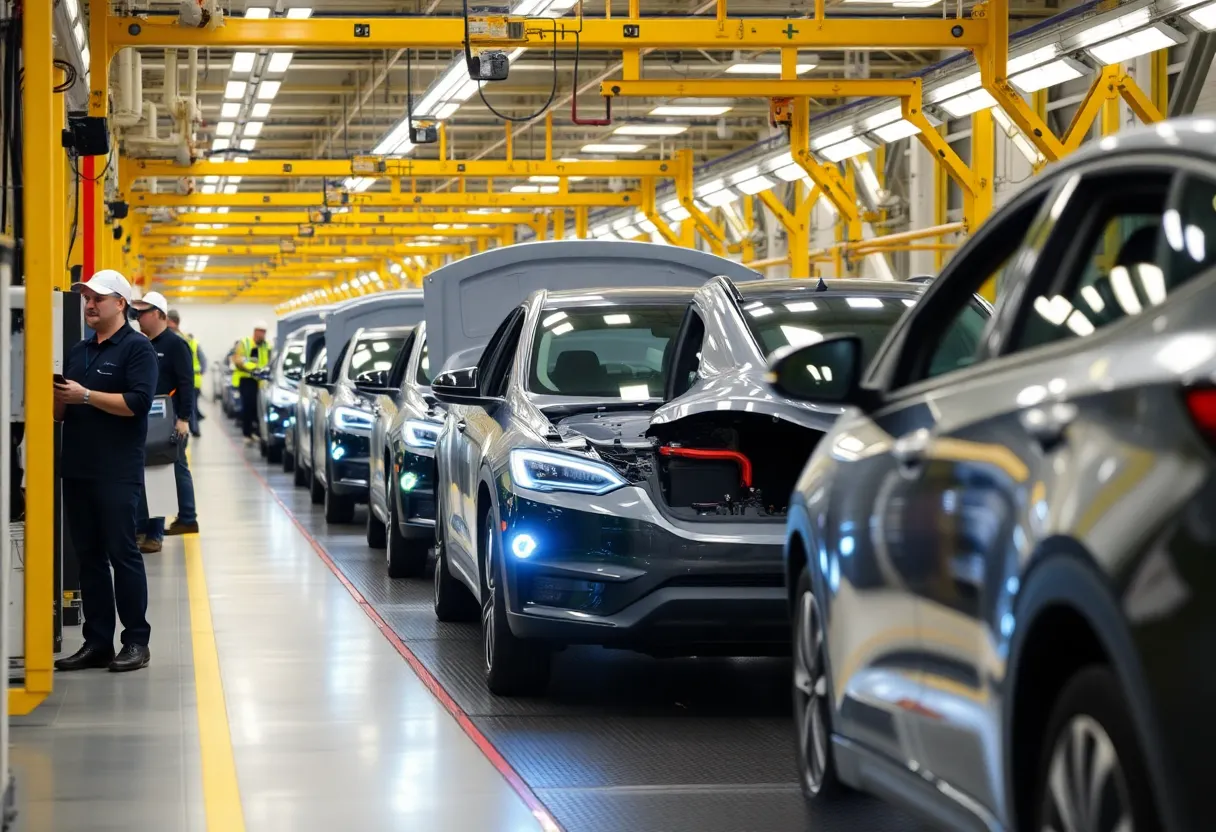News Summary
Chattanooga, a key player in Alabama’s automotive manufacturing, must adapt as the industry shifts towards electric vehicles (EVs). Major companies like Kia and Hyundai are leading the charge, while the region also faces challenges in workforce development and semiconductor supply. Recent federal investments aim to support this transition, although concerns over proposed tariffs loom. With a strong unemployment rate and significant investments in EV infrastructure, Chattanooga’s future in automotive manufacturing hinges on adapting to new technologies and market demands.
Chattanooga’s Automotive Scene Hangs in Balance as Industry Transitions to Electric Vehicles
Chattanooga has been at the heart of Alabama’s automobile manufacturing scene for over 20 years, playing a significant role in the state’s economy. Major automakers like Mercedes, Honda, Hyundai, and Toyota have set up camp in this thriving region, along with a plethora of suppliers sprouting up to support them. But as we roll into an era where electric vehicles (EVs) are becoming the norm, the local auto industry faces some considerable adjustments.
Adapting to the Electric Revolution
Experts like Dr. Santanu Borah from the University of North Alabama have pointed out that established auto manufacturers must evolve their product lines to include more EVs if they wish to remain competitive. Companies such as Kia and Hyundai are already making strides by launching multiple EV models, while there’s a sense of optimism that Honda and Toyota will soon follow suit. This shift is crucial as it could define the future landscape of Chattanooga’s automotive world.
The Semiconductor Challenge
In addition to the push for electric vehicles, the Federal government has made a significant investment of over $50 billion to enhance the national semiconductor infrastructure. This development could reshape Alabama’s manufacturing scene, bringing opportunities but also challenges, especially in attracting trained personnel for this tech-driven industry. Long-term planning and investment in education will be necessary to support this transition.
A Growing Defense Manufacturing Industry
Meanwhile, the defense sector is seeing a surge as Lockheed Martin recently bagged a $756 million contract from the U.S. Army to develop hypersonic weapon systems. This contract not only boosts the defense manufacturing industry but enhances job opportunities in Chattanooga and beyond.
Job Growth and Economic Stability
Despite the uncertainties, it’s worth noting that Alabama’s overall unemployment rate dropped to an impressive 2.6% in April, while the Huntsville MSA reported an even lower rate of 2.2%. Such low unemployment figures hint at the resilience of the region’s workforce. However, the median home prices in Huntsville did tick up by 2.4% in April 2024, bringing the average to $340,000.
Alabama: A Leader in Auto Exports
With exports of Alabama-made automobiles hitting a whopping $11.2 billion in 2023, the state has proudly earned the title of the No. 1 auto-exporting state. This achievement aligns well with the significant investments made by manufacturers like Mercedes-Benz, which has poured over $7 billion into its Alabama operations since its inception, providing jobs for more than 6,300 employees.
The Threat of Proposed Tariffs
However, the peace is fragile. Recently, President Trump’s proposal of a 25% tariff on auto imports has sparked concern among automakers in Alabama. Companies such as Mercedes-Benz are voicing trepidations about how these tariffs could negatively affect production lines and pricing stability. The upcoming Alabama Automotive Manufacturers Association conference is set to zero in on this hot-button issue, bringing concerns and strategies to the forefront.
Investments in Workforce Development
To ensure a smooth transition to electric vehicles and bolster its auto manufacturing future, Alabama is heavily investing in workforce development. A new training center, with a budget of $30 million, will focus on equipping workers with the necessary skills for working with electric vehicles and emerging technologies. The Alabama Industrial Development Training (AIDT) has already trained over 125,000 workers since its founding, underscoring the state’s commitment to nurturing a skilled workforce.
The Future of Automotive Manufacturing
In total, Alabama’s automakers have collectively invested around $15 billion into assembly operations within the state. With approximately $2.1 billion funneled into electric vehicle production infrastructure since 2020, the road ahead is one that blends strong tradition with an innovative future. The question remains: Can Alabama’s automotive industry adapt quickly enough to keep its wheels turning?
Deeper Dive: News & Info About This Topic
- WVTM 13: Alabama Mercedes-Benz Tariffs on Imported Vehicles
- Wikipedia: Automobile Industry in Alabama
- AL.com: How Will Trump Tariffs Affect Alabama’s Automakers
- Google Search: Trump Tariffs on Automakers
- Made in Alabama: Alabama Auto Industry’s Rapid Growth Fueled by Billions in New Investment
- Google Scholar: Alabama Automotive Industry Growth
- Alabama Reflector: Trump Tariffs Could Shake Alabama’s Auto Industry
- Encyclopedia Britannica: Automotive Industry
- USA Today: Trump Tariffs and Alabama’s Auto Industry







